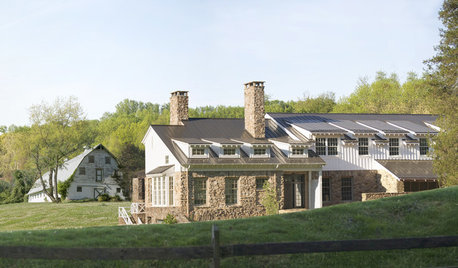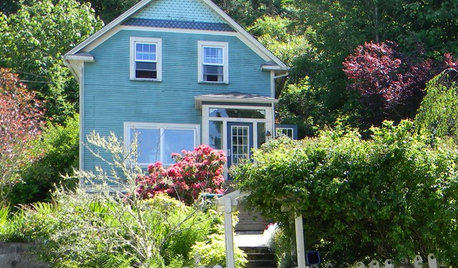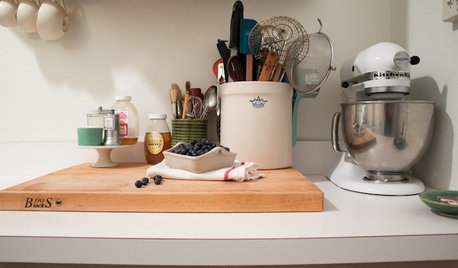Why not try favas?
flora_uk
15 years ago
Related Stories

PETSSo You're Thinking About Getting a Dog
Prepare yourself for the realities of training, cost and the impact that lovable pooch might have on your house
Full Story
SUMMER FRUITS AND VEGETABLESSummer Crops: How to Grow Beans
Grow your own beans for amazing variety and healthy, convenient produce all summer
Full Story
GARDENING GUIDES10 Easy Edibles for First-Time Gardeners
Focus on these beginner-friendly vegetables, herbs, beans and salad greens to start a home farm with little fuss
Full Story
MOST POPULARHow to Start a Cool-Season Vegetable Garden
Late summer and late winter are good times to plan and plant cool-season crops like salad greens, spinach, beets, carrots and peas
Full Story
FARMHOUSESHouzz Tour: An Old Barn Inspires a Gracious New Home
Graceful and elegant, this spacious home in the Virginia countryside takes farmhouse style up a notch
Full Story
HOUZZ TOURSHouzz Tour: From Old Stable to Minimalist Guesthouse in England
Its interior bays once held racehorses, but now this all-white and wood home holds fascination as a modern part-time home
Full Story
FARM YOUR YARDAdvice on Canyon Farming From L.A.'s Vegetable Whisperer
See how a screened garden house and raised beds help an edible garden in a Los Angeles canyon thrive
Full Story
HOUZZ TOURSMy Houzz: Honoring the Past in an 1891 Queen Anne
Antiques and respectful renovations give a home in Oregon old-world charm and modern-day comforts
Full Story
KITCHEN DESIGNKitchen of the Week: Tiny, Fruitful New York Kitchen
Desserts and preserves emerge from just a sliver of counterspace and a stove in this New York food blogger's creatively used kitchen
Full Story





MrClint
fusion_power
Related Professionals
Franconia Landscape Architects & Landscape Designers · Zion Landscape Architects & Landscape Designers · Coram Landscape Contractors · Fairhope Landscape Contractors · La Mirada Landscape Contractors · Mashpee Landscape Contractors · Miller Place Landscape Contractors · Crowley Landscape Contractors · Columbia Decks, Patios & Outdoor Enclosures · Fredericksburg Decks, Patios & Outdoor Enclosures · Kernersville Decks, Patios & Outdoor Enclosures · New York City Decks, Patios & Outdoor Enclosures · Parker Decks, Patios & Outdoor Enclosures · Rancho Palos Verdes Decks, Patios & Outdoor Enclosures · West Chicago Decks, Patios & Outdoor EnclosuresMrClint
iris_9
MrClint
flora_ukOriginal Author
iris_9
MrClint
happyday
jimster
cabrita
slo_garden
cabrita
cabrita
flora_ukOriginal Author
nas1234
flora_ukOriginal Author
cabrita
flora_ukOriginal Author
cabrita
bobb_grow
flora_ukOriginal Author
bobb_grow
frothelhorse
frothelhorse
fliptx
MrClint
bobb_grow
happyday
hemnancy
bobb_grow
frothelhorse
bobb_grow
ncvgarden
bobb_grow
happyday
ncvgarden
cabrita
MrClint
newgardener_tx
mattjjd24
jimster
nanelle_gw (usda 9/Sunset 14)
naturegirl_2007 5B SW Michigan
promethean_spark
jimster
flora_ukOriginal Author
cabrita
flora_ukOriginal Author
promethean_spark